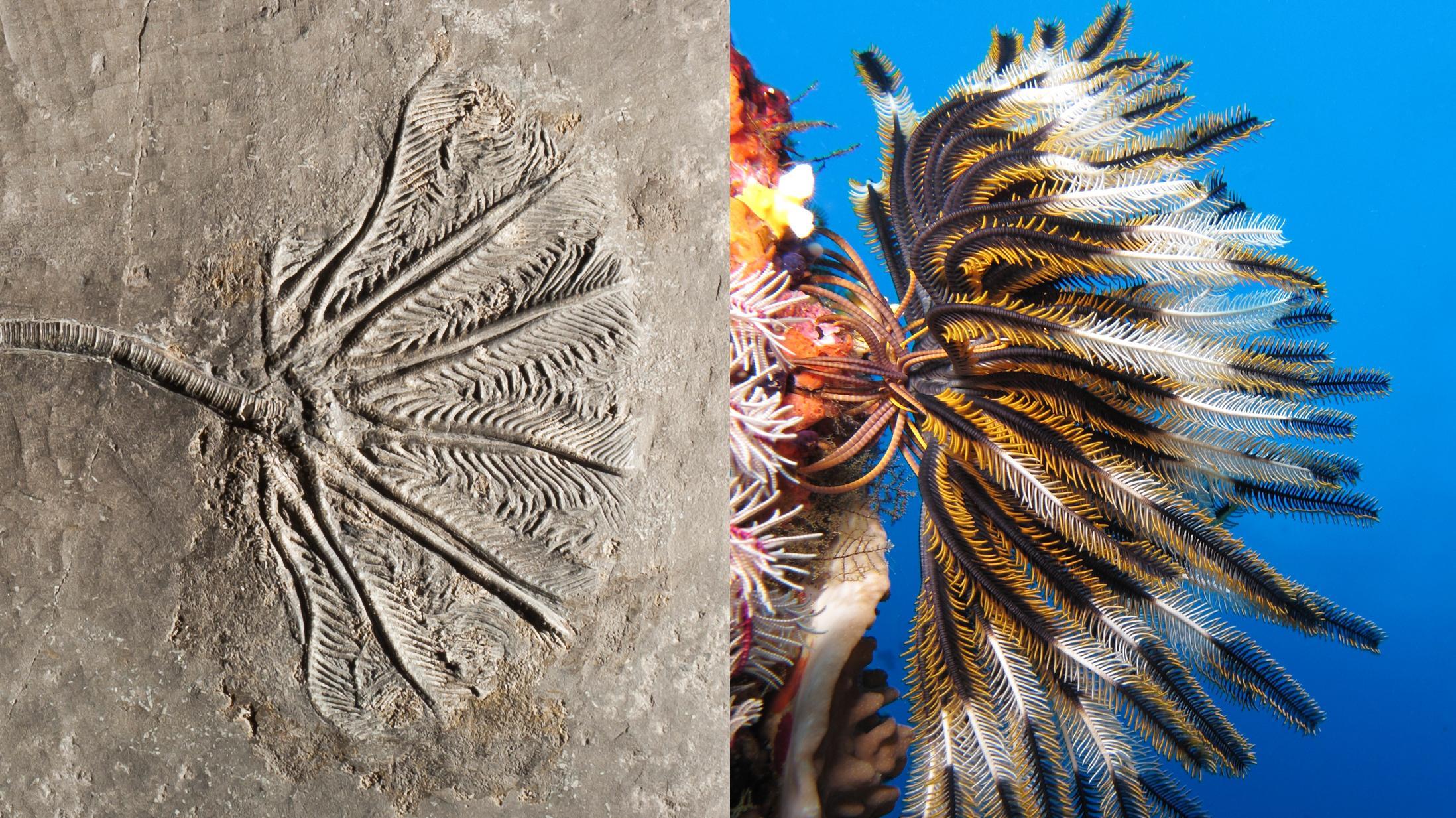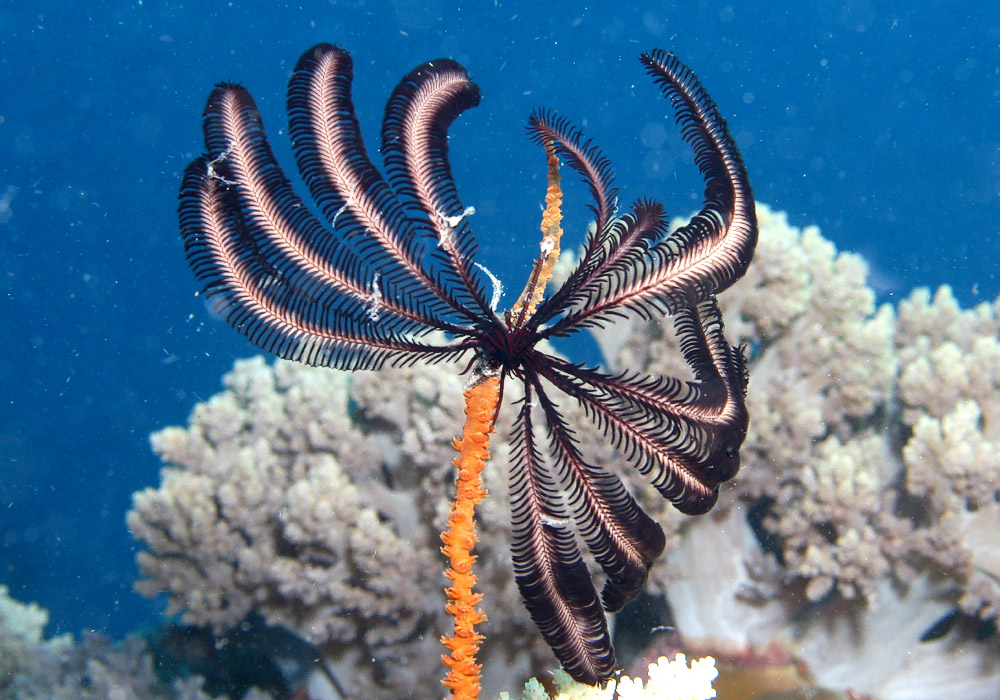Favorite CollLection Triceratops Real Figure Keyring
$11.95

CrinoidThe term, crinoid, refers to an extant (living) class of echinoderms. These animals, commonly known as “sea lilies” and “feather stars”, have a long history. They first appear in the fossil record in marine sediments deposited approximately 530 million years ago during the Cambrian Period. Stemmed forms are called sea lilies because of their superficial resemblance to flowers. These stemmed crinoids became abundant in the middle Ordovician Period, 470 million years ago, and flourished in the shallow inland seas of the Paleozoic Era. Though so abundant that many late Paleozoic limestone deposits are composed primarily of crinoid skeletal parts, they nearly became extinct 240 million years ago at the end of the Paleozoic Era. Free-moving stemless varieties, called feather stars appeared during the Mesozoic Era approximately 200 million years ago.

Crinoid possess an endoskeleton composed of calcareous plates and covered by a thin epidermis. Living, shallow water forms are extensively pigmented. Each plate is a single, very porous calcite crystal. Unfused plates are held together with ligaments or muscles. The skeleton may be divided into four basic parts: The holdfast, which anchors the crinoid to the ocean bottom; the stem, which raises the calyx above the substrate; the calyx, which contains the internal organs; and from five to as many as 200 feeding arms, which gather food. The function of these skeletal parts may vary for different species of crinoids, For example, some fossil crinoids have been found anchored to logs that presumably floated as the animal dangled in the water. Feather stars cast off their stem and holdfast at an early stage of development.

Crinoids are filter feeders. Most crinoids obtain their nutrition by spreading their feeding arms to sieve the passing sea water for microscopic organisms and detritus. Mucus, on the tube feet located on each pinnule, ensnares the prey. The food is then flung into a ciliated groove on the pinnule. Beating cilia convey the food down the ambulacral grooves on the arms. The ambulacral (food) grooves continue on to the calyx and finally converge on the mouth where the food enters the digestive tract.

Fossil crinoids were gathered by the ancients and used for medicine, religion and adornment. Scientists described fossil crinoids decades before living forms were recognized. They are still collected by professional and amateur paleontologists and geologists. Many museums and amateur collectors display these delicate and exquisite fossils. Cut and polished crinoidal limestone, which has both beauty and strength, is used as a building stone in many parts of the world. Crinoids provide evidence of organic evolution and continuing changes to the geography, environments and ecosystems of our planet. As fossils, they help document the drifting of the continents as well as the creation and obliteration of ancient seas. The Class Crinoidea survived several mass extinctions over the past 530 million years. Crinoids are, thus, one of the most successful forms of life on earth. Their continued existence demonstrates both the tenacity and the fragility of life.